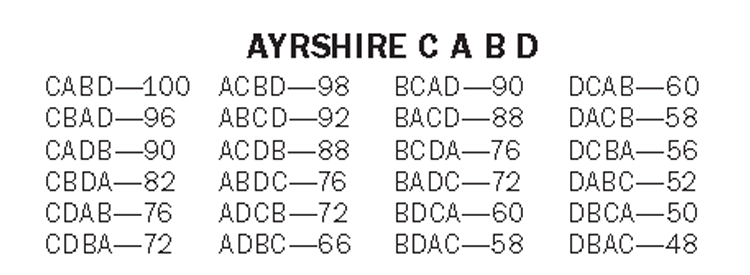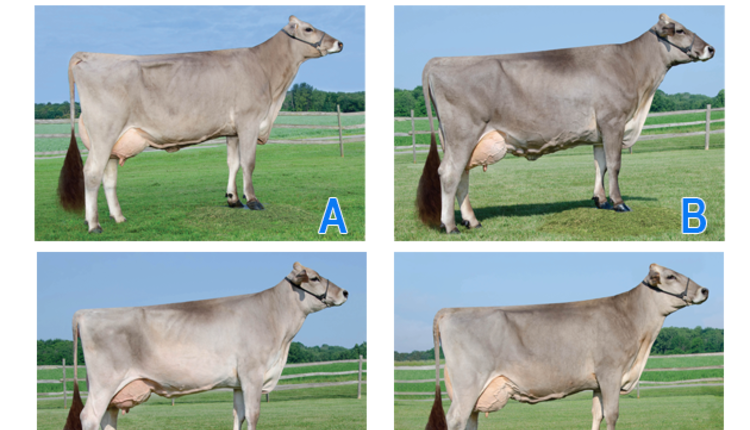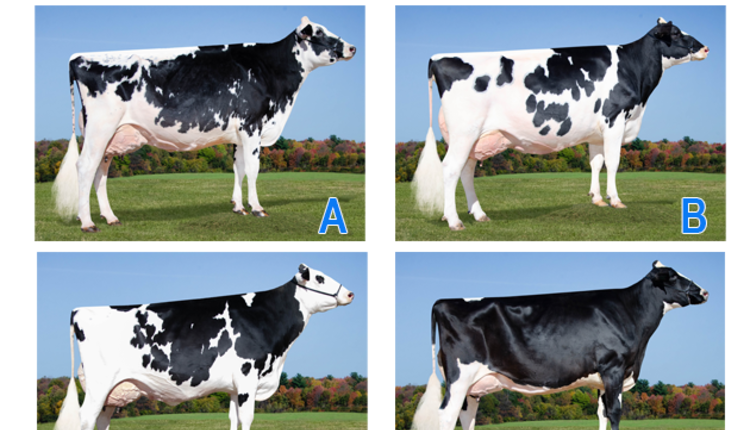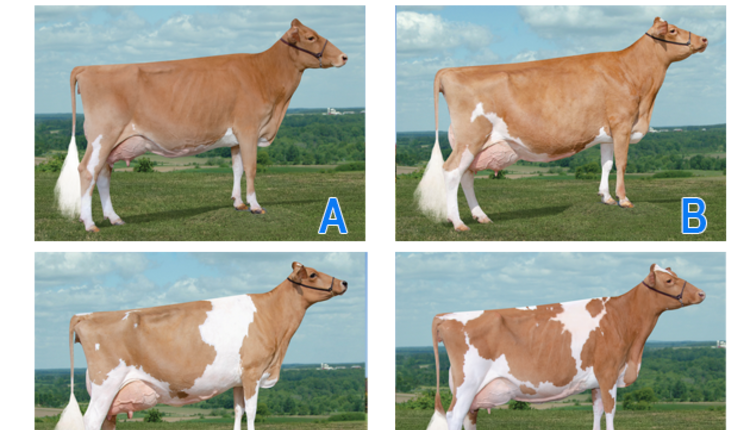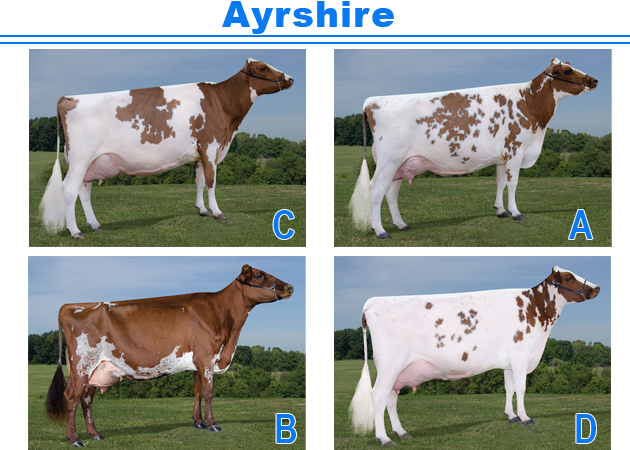
AYRSHIRE — C A B D
C uses her advantages in body capacity, frame, and dairy character to sort herself to the top of the class. She narrowly places over A by having the edge in body capacity. C has more depth to the fore and rear rib than A. In addition, C is more refined throughout, being longer and leaner in her neck and throat while also being more open through the rib. Furthermore, C is more correct on her feet and legs, having less set to the hock and tracking straighter when viewed from behind. I recognize that A is higher in the rear udder attachment and has a fore udder that blends more smoothly into the body wall.
In my middle placing, A gets the nod over B with her sheer advantage in strength and power. A has more width through the front end and carries it back to a wider set of hips, pins, and thurls. This is complemented by A’s advantage in body capacity, being deeper in the rib and more boldly sprung about the rib cage than B. Finally, A has an advantage in rear teat placement, having teats that creep up the midline of the udder less. I admit that B has less set to the hock and is flatter boned about the hock than A.
Finally, in my bottom placing, B handily places over D with her clear-cut advantage in the udder. B has higher rear udder attachment, a longer fore udder attachment, and is more nearly level about the udder floor than D. In addition, B has a shorter, stronger set of pasterns than D, while also displaying more depth of heel. A final point in B’s favor is that she is cleaner cut through the throat and brisket than D. I grant that D is deeper in the rear rib than B while also having a more correct rear teat placement. However, D lacks the correctness through her udder attachments, strength in her pasterns, and refinement to place any higher.
About the judge . . David Hanson

